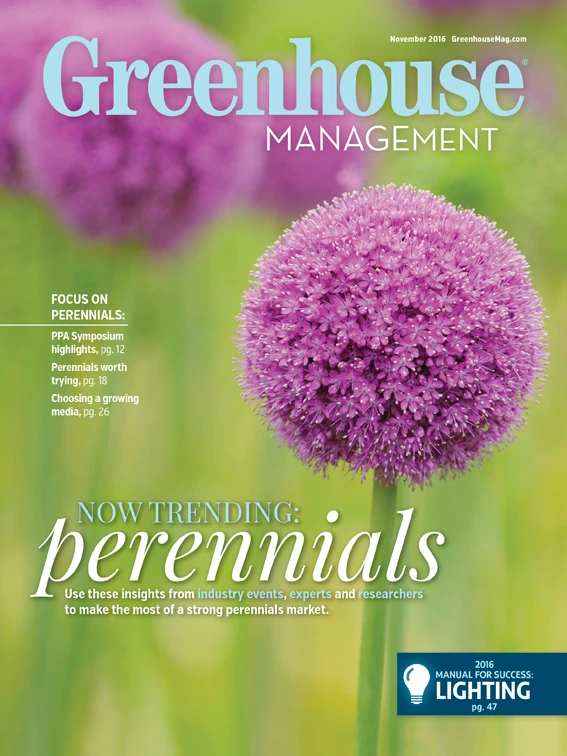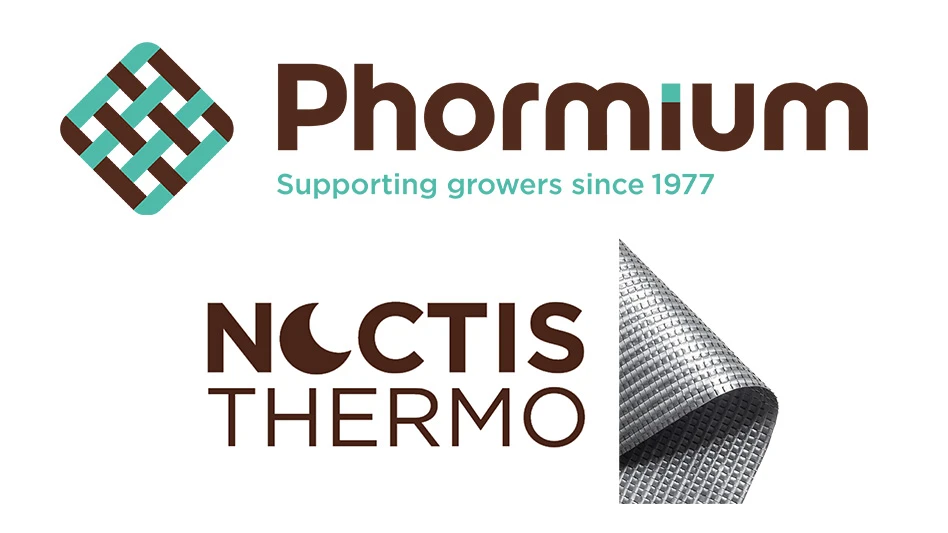
The first light-emitting diode (LED), a red light, was developed in 1962(1). However, the first documented use of LEDs for plant growth studies was not until 1988 by NASA for its project investigating space-based plant growth systems, and not until 2000 for the first commercial use of LEDs for plant production in Japan (1).
A look at the numbers
For horticultural lighting, fixture efficacy is often referred to as the total amount of photons of light emitted by the fixture every second per every watt of electrical power (µmol W-1 s-1). In terms of electrical efficacy, LEDs have now surpassed high pressure sodium (HPS) lamps commonly used in the greenhouse as supplemental lighting. Currently, commercial double-ended HPS fixtures are advertised to have 1.83 µmol W-1 s-1 while some horticulture LED fixtures are advertised at 2.56 µmol W-1 s-1.
Let’s convert these numbers into something more tangible. Since the rule of thumb is that each 1-percent increase in light (moles of light per day) should equate to a 1-percent increase in yield, then, the real question is: How may moles of light can the user obtain for every kWh of energy used? For the HPS (1.83 µmol·m-2·s-1) it’s 6.6 mol kWh-1 and for the LED(2.56 µmol·m-2·s-1) it’s 9.2 mol kWh-1, which means that this particular LED has 40-percent greater efficacy (mol kWh-1) than the HPS.
LED efficacies have changed tremendously in the past two years. For example, in 2014, commercial horticultural LEDs were advertised to be close to 1.7 µmol W-1 s-1 (6.1 mol kWh-1) and the efficacy now, in 2016, is 51 percent greater.
However, one of the biggest challenges that LED technology currently faces is the cost per fixture. For example, outfitting a greenhouse to provide approximate 100 µmol m-2 s-1 (5.8 moles of extra light per day if lights are on for 16 hours) could cost $2.2/ft2 with HPS compared to $8.4/ft2 using LEDs (total will vary depending on manufacturer, distributor and greenhouse geometrics). In order to keep the cost of installing a new lighting system down, recommendations are frequently made to use a hybrid system with HPS as top lighting and LED as inter-lighting.
A bright future
LED diode/chip manufacturers announced that they have met the 300-lumen per watt milestone for white LEDs(2). Lumens are used to quantify the human perception to light and the lumen unit does not apply to plant growth. However, if we do some back-of-the-envelope calculations, the 300 lm/W could translate to approximately 4.3 µmol W-1 s-1 (estimated conversion based on current 18W LED Creed fixture(3)). Although the diode efficacy does not directly translate to whole fixture efficacy, in the near future, we can expect a significant increase in the moles of light per kWh of power.
Currently, horticulture LED manufacturers are focusing on two different strategies. Some LED manufacturers are focusing on LEDs with a fixed spectrum to match the specific application (vegetative growth, flower induction, etc.) while also focusing on reducing the cost per fixture and maintaining high efficacies.
On the other hand, specialty LED manufacturers are focusing on greater operational control. For example, these manufacturers are working on unique user interfaces that allow the operator to set lighting programs, such as different colors and intensities throughout the day or the season. Since these fixtures have more wavelengths and controllers they tend to have lower efficacy (moles kWh).
In my opinion, for the immediate adoption of LEDs in horticulture, it is important to find those “fixed” spectrums that work for your particular operation while keeping the efficacy as high as possible, and the cost per fixture low in order to reduce the ROI time. However, for the future of LEDs in horticulture, and in order to harness the full extent of the benefits of this technology, I believe that a versatile operational control and user interface will create the value-added benefit.
References:(1) Mitchell C.A., Burr J.F., Dzakovich M.J., Gómez C., Lopez R., Hernández R., Kutoba C., Currey C.J., Meng Q., Runkle E.S., Bourguet C.M., Murrow R.C., Both A.J. (2015) Horticultural Reviews-Light-Emitting Diodes in Horticulture WILEY Blackwell.; (2) bit.ly/2doWz0D; (3) Wallace C., Both A.J. (2016) Evaluating operating characteristics of light sources for horticultural applications, International Society for Horticultural Science (ISHS), Leuven, Belgium. pp. 435-444.

Explore the November 2016 Issue
Check out more from this issue and find your next story to read.
Latest from Greenhouse Management
- This month's Greenhouse Management magazine is about native plants and sustainability
- The HC Companies, Classic Home & Garden merge as Growscape
- Terra Nova releases new echinacea variety, 'Fringe Festival'
- Eason Horticultural Resources will now officially be known as EHR
- BioWorks receives EPA approval for new biological insecticide for thrips, aphids, whiteflies
- ScottsMiracle-Gro transfers cannabis subsidiary to focus on core lawn and garden business
- Should we start calling natives 'eco-beneficial plants'?
- Ellen Mackenbach-Lakeman appointed new CEO of Dümmen Orange





